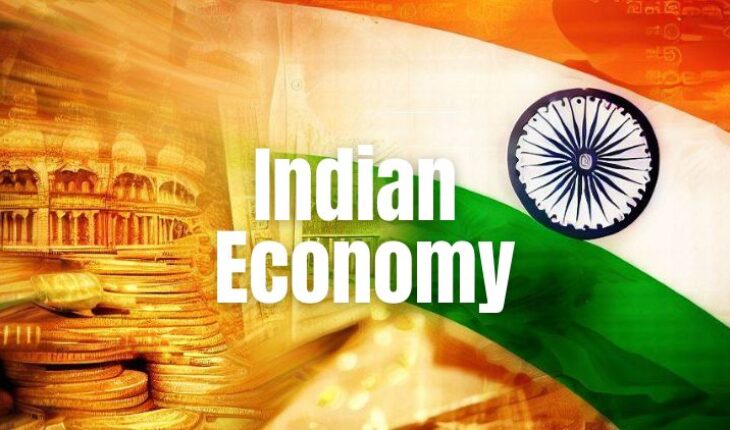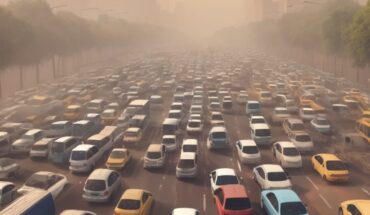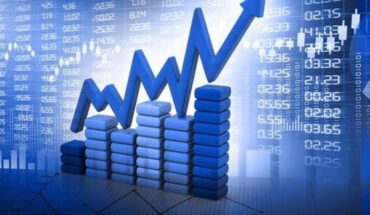
There are many factors that bolster the economy. Recently, many such parameters which strengthen the economy have improved. Rating agencies have also spoken about the make stronger of the Indian economy. However, other countries of the world, including developed countries, are struggling with Corona pandemic, geopolitical crisis, recession, high price of crude oil in the international market, ever-increasing inflation etc & due to them, their economy’s growth rate is lower than India’s.
The total number of Jan Dhan accounts in the country has crossed the 50-crore mark, out of which 56 per cent accounts are of women. It is noteworthy that about 67 per cent of these accounts have been opened in rural and semi-urban areas. This figure shows that we are moving fast on the path of financial inclusion.
Till August 13, the total deposits in Jan Dhan accounts were more than Rs 2.03 lakh crore & in the 50 crore accounts, 34 crore Rupay cards have been issued free of cost so far, which shows that the propensity to saving is enhancing in rural and semi urban areas. Online market has got wings with Rupay card. This figure also confirms that people are spending in villages as well, which is increasing demand and reinforcement the economy. Today, Amazon, Flipkart, Ajio, Myntra etc. are delivering in the villages as well, due to which the villagers are getting the goods of their choice sitting at a reasonable price and they got rid of the touts.
The Modi government in 2014 launched a nationwide campaign to open Jan Dhan accounts in the banks to promote financial inclusion, with the aim of making a range of financial services, benefits of government sponsored schemes including Direct Benefit Transfer (DBT), accessible to the poor. Even during the Corona period, due to the Jan Dhan accounts, the government was able to provide timely financial assistance to the poor, due to which thousands and lakhs of people were saved from untimely death.
The bank will start implementing Pradhan Mantri Vishwakarma Yojana from September 17 to benefit 30 lakh families of traditional artisans, weavers, goldsmiths, blacksmiths, washermen, barbers etc. To give shape to this scheme, the government has allocated Rs 13,000 crore for 5 years. The bank will provide loans up to Rs 1 lakh in the first phase and up to Rs 2 lakh in the second phase at 5 percent interest. The Finance Ministry has directed the heads of banks to ensure speedy disposal of applications received under the Pradhan Mantri Vishwakarma Yojana and to continuously monitor the sanction & disbursement of loans under this scheme.
Moody’s has retained India’s stable outlook status. This means that India’s economy has a strong potential to continue to grow rapidly by international standards. According to Moody’s, India’s GDP growth will continue in incoming days too, and the Indian economy will continue to grow stronger. If the economy remains strong, it will be easier for fiscal consolidation and stabilization of the government’s debt. Moody’s believes that India’s economic growth will be faster than the economies of all other G-20 countries for at least 2 years. India’s potential growth rate is expected to be around 6 to 6.5 percent, which was less than 6 percent during the pandemic. However, this is less than the 7 percent increase in the middle of the last decade.
Moody’s also said that India is continuously trying to consolidate the economy and hence its economic and contingent liability risks are coming down. It is also believed that if India’s fiscal consolidation accelerates as expected, Moody’s may upgrade India’s rating. Fiscal consolidation will reduce the debt burden of the government and improve debt affordability and increase fiscal strength. According to Moody’s, at present, due to increase in global and domestic interest rates in India, there is a situation of increase in debt burden and weak credit distribution.
According to the research report Ecowrap published by State Bank of India’s Economic Research Department, Corporate Centre, Mumbai, based on income tax returns, the weighted average income in the financial year 2022-23 will be Rs 13 lakh, whereas it was Rs 4.4 lakh in the tax assessment year 2013-14. According to SBI Research, even smaller states like Manipur, Mizoram and Nagaland have registered more than 20 per cent growth in income tax return filing in the last 9 years. It is clear from this that not only the income of the people has increased in recent times, but tax compliance has also increased.
According to the Prime Minister’s LinkedIn post, there has been at least a three-fold increase in the tax-base across various income groups and filing of income tax returns for each group in FY 2022-23. When comparing the income tax returns filed between 2014 and 2023, the picture of increased tax participation in all the states looks rosy. Uttar Pradesh has emerged as the leading performing state in terms of income tax return filing. According to Honourable Prime Minister Shri Narendra Modi, India can become a developed country by the time India completes 100 years of independence in the year 2047 if the current pace of development is maintained. Currently India is the fifth largest economy in the world.
During the first 4 months (April-July) of FY 2023-24, among India’s top 10 export hubs, only merchandise exports to the UK grew, while exports to all other major economies declined due to lower global demand. Exports to the UK grew by 20.6 per cent to $4.5 billion during the period. The UK has moved up from the eighth largest export hub to become India’s fifth largest export destination during this period in FY23.
According to the Minister of State for Electronics and Information Technology, Rajeev Chandrasekhar, by the year 2026, the contribution of the digital economy to the country’s GDP is estimated to be more than 20 percent. India is a country which has adopted technology very fast and now it has started offering technological solutions to the world. The contribution of digital economy to GDP was four and a half percent in 2014, which has increased to 11 percent today. India has adopted technology not only for innovation but also for providing solutions in various fields, which has brought about radical changes in people’s life, operational system, administration, education, health, technical nature of democracy etc. in the last few years. It is because of these reasons that Honourable Prime Minister Shri Narendra Modi has called the coming decade as the decade of technology.
In such a situation, it can be said that the Indian economy is getting better gradually even in difficult times, and all this is possible due to the appropriate steps and initiatives being taken from time to time by the government and the Reserve Bank of India.
Satish Singh, Ahmedabad based Senior Columnist, Views are personal.






